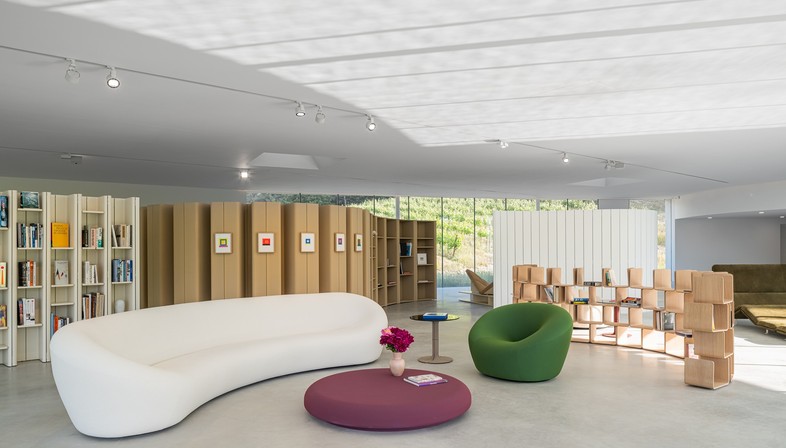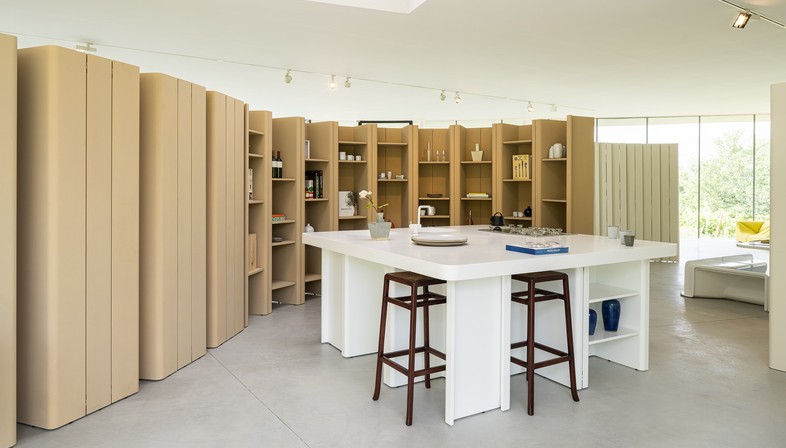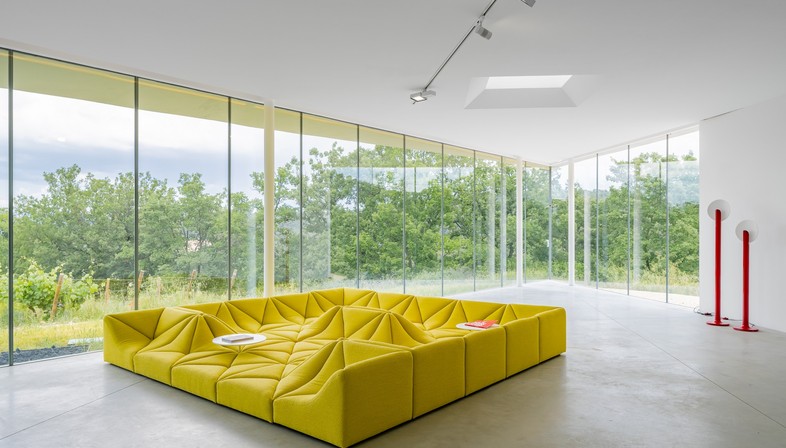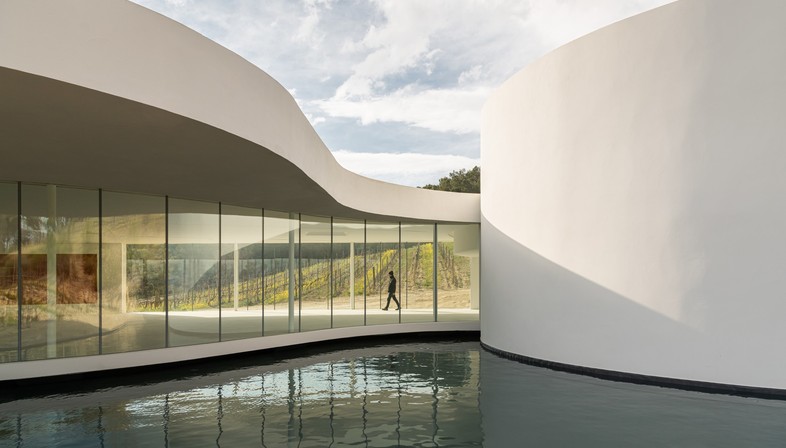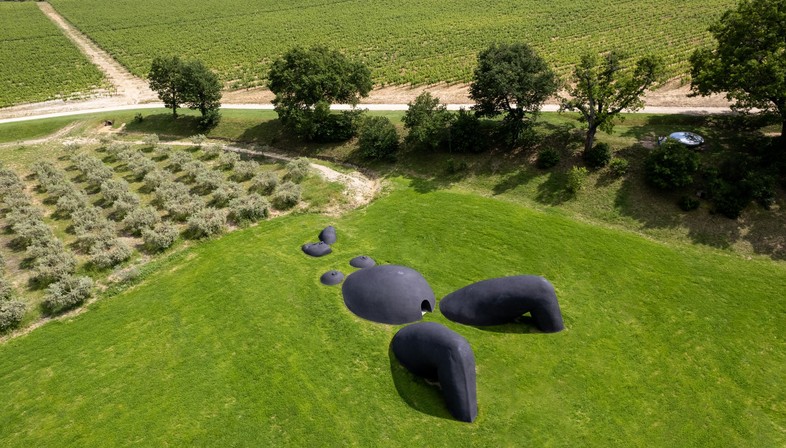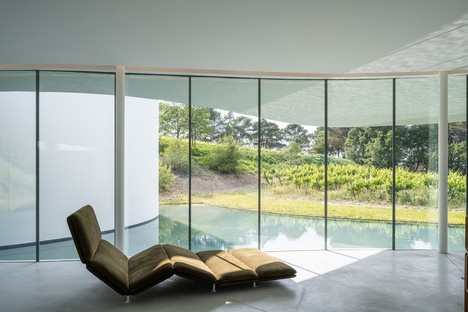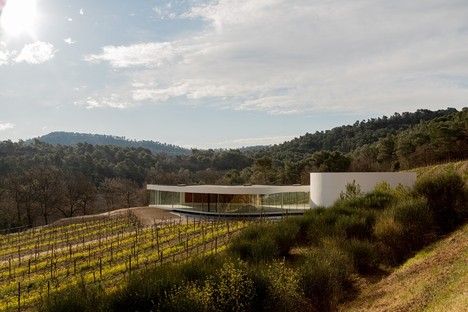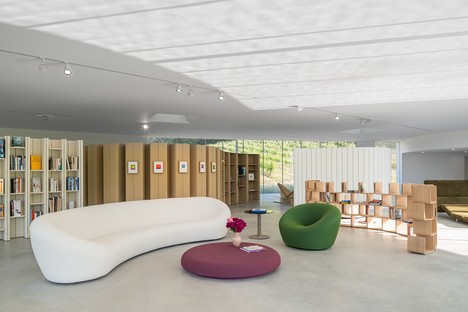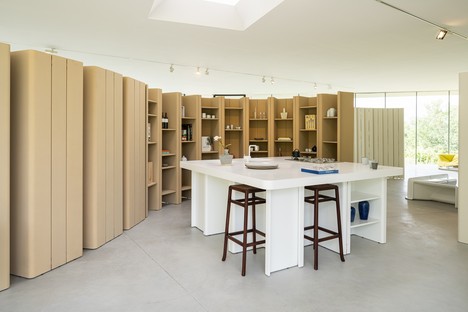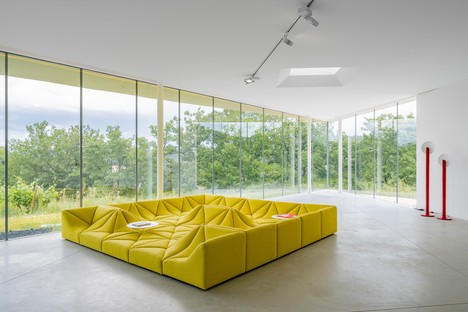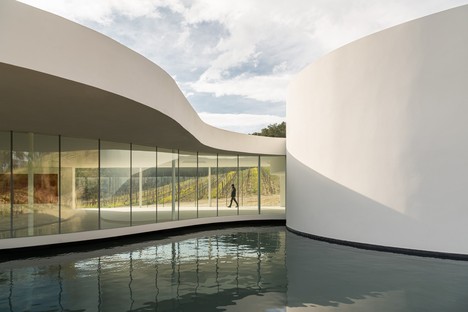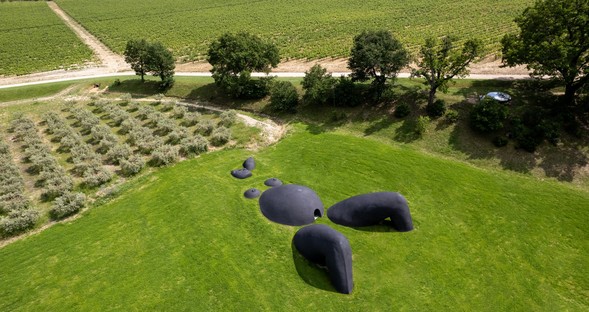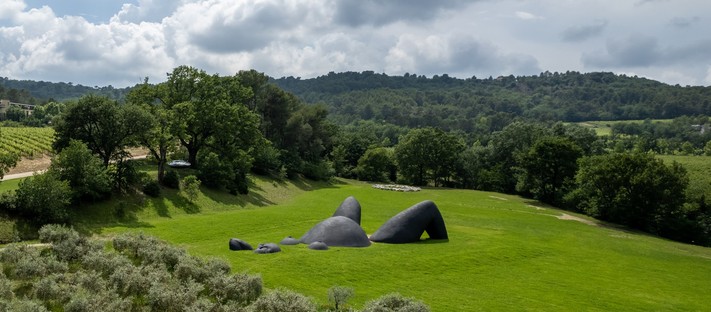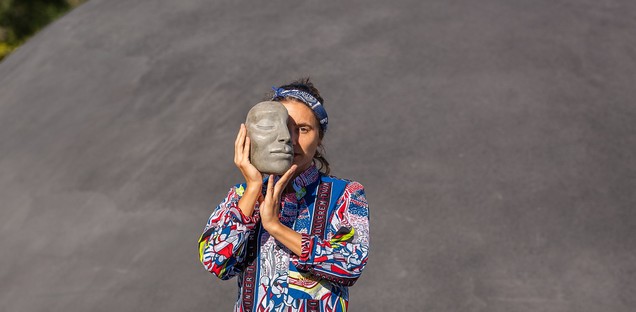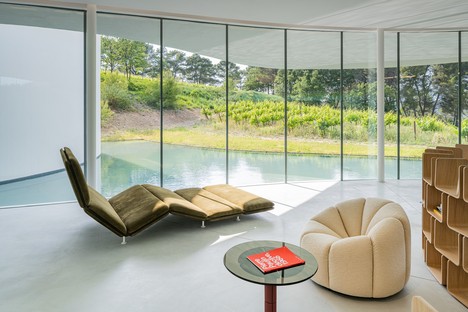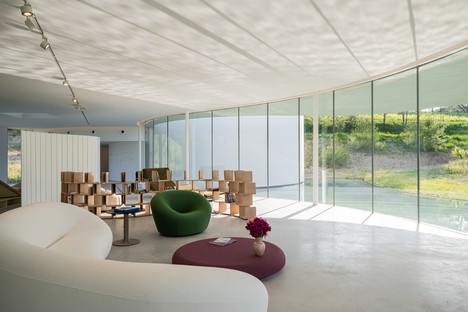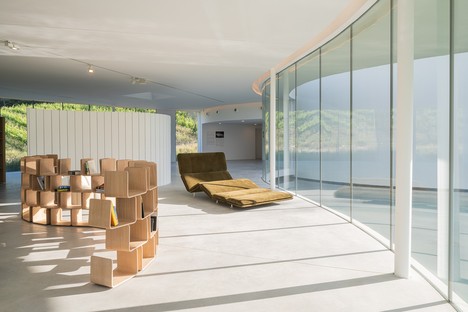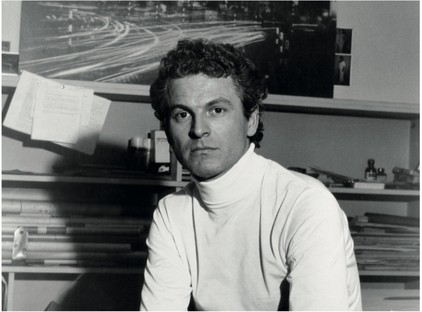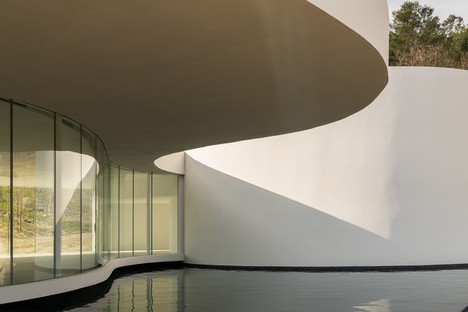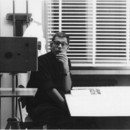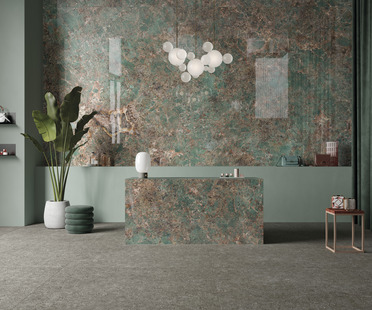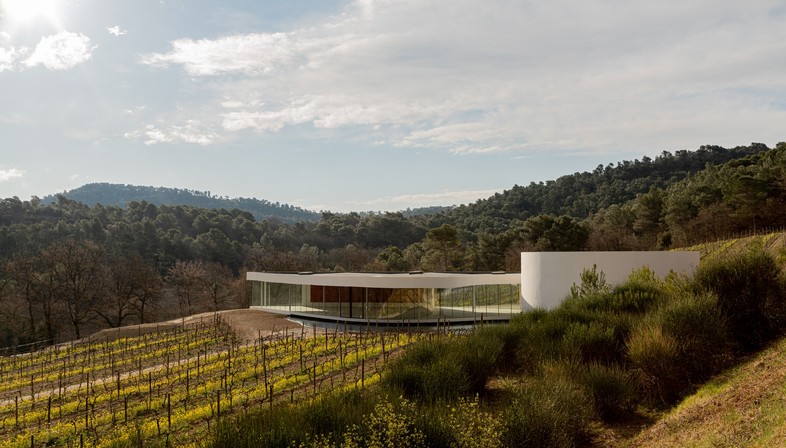
When you climb to the top of the hill, over the clayey soil of the immense Château La Coste estate, planted with rows of Aglandau olives and Vermentino grapes (both organically grown), two surprises await you: Oscar Niemeyer’s latest project rises before your eyes, visible only if you concentrate on the building, as it blends into the soft curves of the landscape around it, perfectly camouflaged into the vegetation. The pavilion designed by the Brazilian architect in 2011 (a year before his death) was not completed until last year, adding to the immense artistic heritage of Château La Coste, a winery and estate in Provence owned by Irish tycoon and art patron Paddy McKillen, who has over the past twelve years dotted it with buildings, pavilions and works of land art, all open to the public. He has involved a list of prestigious architects and artists in his projects: not only Niemeyer, but other architects of the calibre of Tadao Ando, Richard Rogers, Kengo Kuma, Frank Gehry, Renzo Piano, and Jean Nouvel, with artworks by Ai Weiwei, Louise Bourgeois, Alexander Calder, Bob Dylan (an enchanting work), Richard Serra, Paul Matisse, Anselm Kiefer and many more. Niemeyer’s pavilion contains an exhibition about the vision of domestic space of French designer Pierre Paulin, one of the most genial designers of the late twentieth century.
Going into the pavilion, which has no corners, but curved glass walls and a single open indoor space, we find ourselves immersed in an airy residence, broken up by a series of bookshelves and modular cabinets into a number of areas furnished with multi-purpose sofas, soft rounded seats, chaise longues shaped like waves, minimalist lamps, tables and coffee tables, as well as a kitchen with a central island. This highly contemporary vision of furniture and domestic space looks brand new, though surprisingly it actually dates back to the years between 1968 and 1971, designed by Paulin (1927-2009), whose work between the fifties and the eighties anticipated all the themes of contemporary living.
The set-up of the residence in the Niemeyer pavilion is the heart of the exhibition Château La Coste dedicates to the designer in collaboration with Paulin, Paulin, Paulin, the brand founded by his heirs, who own the rights to it and to the production of the furniture. The exhibition, curated by Lyna Ahanda, founder and editor of Lurve, and entitled ‘Pierre Paulin Program: Des idées courbes, Des formes libres’, sums up the designer’s vision, perfectly in harmony with Niemeyer’s, in two concepts: curves and freedom. The installation faithfully reconstructs Paulin’s so-called ‘Program’, consisting of six models for the design of home furnishings (now the property of the Pompidou Centre). In the first, Paulin brings together all the elements in the programme, modular furnishings sufficient to furnish an entire home, while the five that follow exemplify possible uses of these furnishings, proposing different arrangements and subdivisions of space. In addition to the precious maquettes, the exhibition brings the incredibly contemporary model number five back to life, allowing visitors to walk all around it.
Module U (1972) and Module B (1970) are shelving systems bordering functional areas with curved walls that can be adapted at will; Ensemble Dune (1970), a square upholstered seat that is somewhere between a carpet and a sofa, develops the idea of a floor that can be structured and used as a seat; Tapis Siège (1968) is a low container that also serves as a seat, with an upholstered surface whose corners can be raised to become backrests. Similarly, the beautiful Big C sofa and the Déclive n.3 chaise-longue with two or more seats can be structured at will. Together they inspire a great sense of freedom and break away with the formal constrictions of the past, responding to users’ needs and inclinations. They establish an intense dialogue with Niemeyer’s pavilion, a work of architecture with no appreciable weight or perimeter in which we nonetheless feel perfectly at home.
Upon exiting the pavilion, visitors can admire the latest new artwork in the gardens of Château La Coste, walking down the hill toward a flat area only steps away from the visitors’ centre: a monumental walk-in sculpture by French artist Prune Nourry entitled Mater Earth, inaugurated in October 2022. It represents a pregnant woman who seems to emerge out of the field, lying on her back relaxing with her head resting on one arm, gazing into the distance. The work is made entirely of terracotta and represents the ‘Origine du Monde’ (to cite Courbet), as well as the creation myth. Visitors may enter the belly, walking back up the path that leads to life.
Antonella Galli
‘Pierre Paulin Program: Des idées courbes, Des formes libres’
In collaboration with Paulin, Paulin, Paulin
Curated by Lyna Ahanda
Oscar Niemeyer Auditorium
Château La Coste
Route de la Cride, Le Puy-Sainte-Réparade, France
www.chateau-la-coste.com
Until 3 September
Captions
01, 03, 04, 05, 10, 11, 12: exhibition installation, ph. Stephane Aboudaram, Wearecontents
02, 06, 14: the Oscar Niemeyer pavilion in Château La Coste, ph. Wearecontents
07, 08, Prune Nourry, Mater Earth; ph. Vincent Agnes, Courtesy of Château La Coste
09 Prune Nourry in front of Mater Earth, ph. Wearecontents, Courtesy of Château La Coste
13 Pierre Paulin, portrait, Courtesy of Paulin, Paulin, Paulin and Château La Coste










